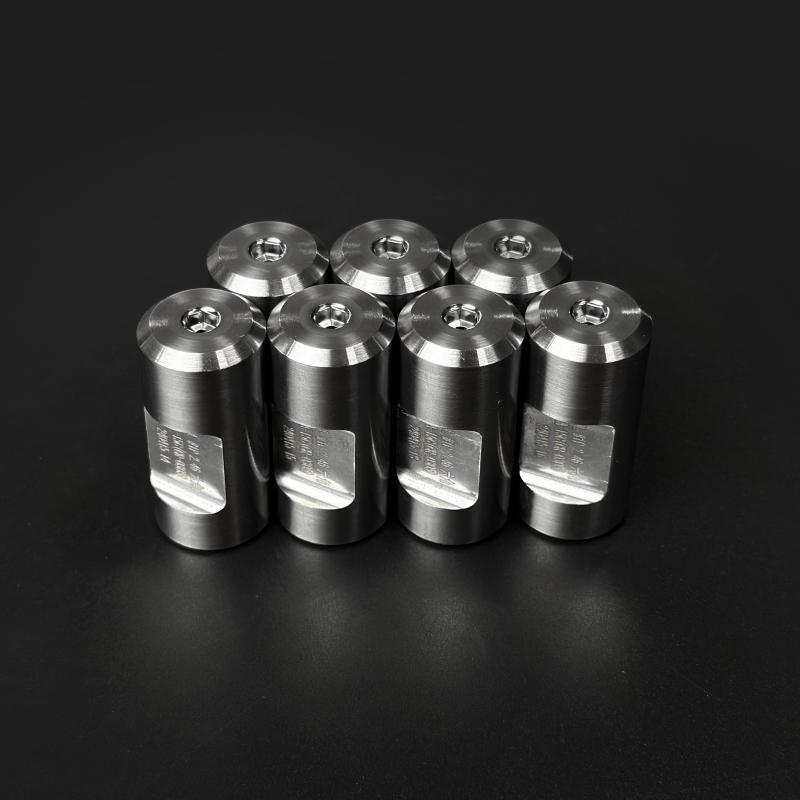Punch Dies: Comprehensive Guide
What Are Punch Dies?
Punch dies are precision tools used in manufacturing to cut, shape, or form materials into specific designs. They consist of two main components: the punch (upper part) and the die (lower part), which work together to shear or deform materials with high accuracy. Typically made from high-carbon steel (e.g., D2 with 1.5% carbon) or Tungsten Carbide (90-94% WC, 6-10% Co binder), punch dies achieve hardness levels of 58-65 HRC for steel and 85-92 HRA for carbide variants. Modern punch dies maintain tolerances as tight as ±0.005 mm for micro-punching applications and can withstand pressures up to 1,200 MPa during operation.

Key Characteristics:
Precision Cutting: Achieves edge clearances of 5-15% material thickness (e.g., 0.03mm clearance for 0.5mm stainless steel)
Material Versatility: Processes materials ranging from 0.1mm aluminum foil to 6mm carbon steel plates
Durability: Carbide Dies offer 5-8× longer lifespan than steel counterparts (typically 500,000-2M cycles)
Thermal Resistance: Maintains structural integrity up to 600°C (for high-speed operations)
Surface Finish: Produces cut edges with surface roughness (Ra) as low as 0.8μm
Applications of Punch Dies
Punch dies serve critical functions across multiple industries:
1. Automotive Manufacturing
In automotive production, punch dies create body panels with dimensional accuracy of ±0.1mm across 2m lengths. Progressive dies perform 15-30 operations simultaneously on galvanized steel (0.7-1.2mm thickness) at rates of 30-60 strokes per minute. Key applications include:
Door panel blanking (400-800 ton press capacity)
Chassis component forming (12-14mm thick high-strength steel)
Bracket fineblanking (surface finish Ra 1.6μm)
2. Electronics Industry
Micro-punch dies fabricate precision components with features as small as 0.05mm. Applications include:
Connector pin stamping (phosphor bronze, 0.15mm thickness)
EMI shielding fabrication (beryllium copper, ±0.003mm tolerance)
PCB blanking (FR4 material, 50,000 cycles between sharpening)
3. Aerospace Components
Aerospace-grade punch dies process titanium alloys (Ti-6Al-4V) up to 4mm thick with burr heights <0.02mm. Critical applications involve:
Engine shroud production (Inconel 718, 650°C operating temp)
Structural rib forming (7075 aluminum, 8-12% elongation)
Fastener hole punching (0.5-6mm diameter, ±0.025mm positional accuracy)
4. Medical Device Manufacturing
Medical punch dies produce surgical instruments with mirror finishes (Ra 0.4μm). Applications include:
Stent cutting (316LVM stainless, 0.1mm wall thickness)
Scalpel blade blanking (440C steel, 60±1 HRC hardness)
Implant component forming (TiCP, 0.2mm feature size)
Punch Die Maintenance Procedures
Proper maintenance extends punch die lifespan by 200-300% and maintains cutting quality:
1. Cleaning Protocol
Daily: Remove debris using brass brushes (hardness 60-80 HRB) and non-chlorinated solvents
Weekly: Ultrasonic clean in pH-neutral solution (40kHz, 50°C for 15min)
Monthly: Disassemble and polish components with 600-1200 grit diamond paste
2. Lubrication Schedule
Light operations: Apply synthetic ester oil (ISO VG 32) every 5,000 cycles
Heavy-duty forming: Use extreme pressure grease (NLGI #2) with 3% MoS2 additive
High-speed punching: Implement minimum quantity lubrication (MQL) at 50ml/hour
3. Inspection Parameters
Edge wear: Measure using optical comparators (re-sharpen at 0.05mm wear land)
Alignment: Verify with 0.001mm resolution dial indicators
Surface integrity: Check for microcracks using 10× magnification
4. Sharpening Techniques
Conventional grinding: Use CBN wheels (180-320 grit) at 25m/s surface speed
Wire EDM: Employ 0.1mm brass wire with 0.02mm overburn
Laser ablation: Fiber laser (1064nm) at 100W power for Carbide Dies
5. Storage Conditions
Temperature: 20±2°C to prevent thermal stress
Humidity: <40% RH with VCI corrosion inhibitors
Positioning: Store vertically in shock-absorbing racks











